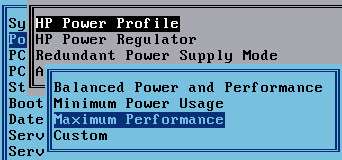New XenDesktop 4 Licensing Model: Flexibility? Yes, but at what Cost?
It seems the Citrix community had only had one topic recently, albeit one discussed hotly: licensing. Now that Citrix has given in and practically allowed all conceivable license types, everybody is happy?! It seems so, although CCU licenses have doubled in price, as Shawn Bass points out. But is this really the happy ending of a short but wild story? Maybe, maybe not. Let me explain.
Shawn Bass writes in his article, “it’ll be interesting to see how these licenses get deployed, allocated, revoked and troubleshot”. There is much truth in that. The new flexibility comes at a cost, and in two different areas.
Understanding It
Citrix licensing used to be fairly simple (and simply fair, though not cheap). One license for each user while accessing the system. No license for inactive users not using the system. Now customers have to choose between per user, per device, campus-wide and VDI edition. Although choice is great, clarity and simplicity are not bad either. That brings me to my first point: Who wants Citrix licensing to be as complex as Microsoft licensing, where only select few specialists fully understand it, even at Microsoft!?
Coding It
But not only customers may suffer from the new flexibility: there is a technical side to licensing, too, at least if it is enforced. If what I have been told is true, the current version of XenDesktop 4 has no licensing enforcement built in. Good for customers, but managers do not appreciate such a state of “uncertainty”. That makes it likely that enforcement will come in a future version of XenDesktop. But how to do it? I can only guess if the current architecture of licensing server can cope with the changes that come with XenDesktop 4. Maybe it can, but it will not be simple to code all these options. And then there is offline usage on the horizon. How do you take a CCU license offline? If you remove it from the CCU pool and assign it to the user or device going offline, it is not a CCU license any more, but gets transformed into a user/device license. So here is my second point: As Shawn indicated, license enforcement requires software for a large number of processes, from purchase to tracking to upgrading. This software needs to be written and maintained, all the while rather becoming (hopefully) than remaining user-friendly. This has not become easier with the recent changes.
And here is a third point disguised as a question: Microsoft has had no enforcement of per-user terminal server CALs since Server 2003 – did it hurt them financially?







2 Comments
Nice thoughts Helge. To further this discussion, is working on uber licensing code really what we want Citrix developers spending their time on? I keep going back to I think it’s absolutely silly that Citrix came up with this nonsense. In my mind all that was necessary was one license – CCU. If an organization wanted to acquire licensing for all of their users 1:1, then they simple buy that many CCU licenses and they work out a pricing deal with field sales that makes sense. This whole thing is an exercise in futility in my mind.
Shawn,
I agree with you. And I always like the use of German words in English (über/uber) ;-)